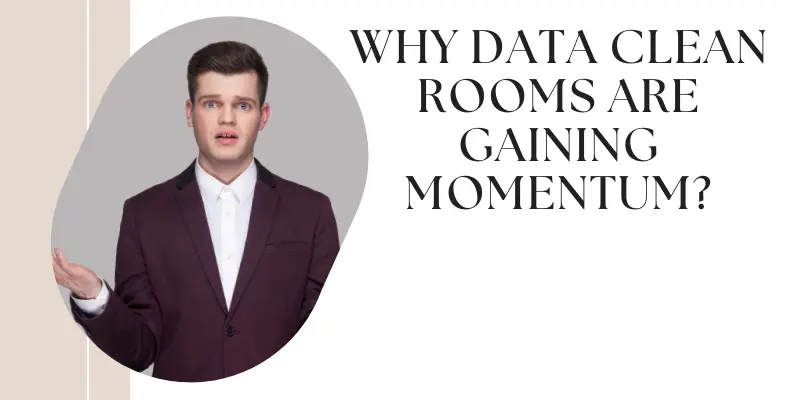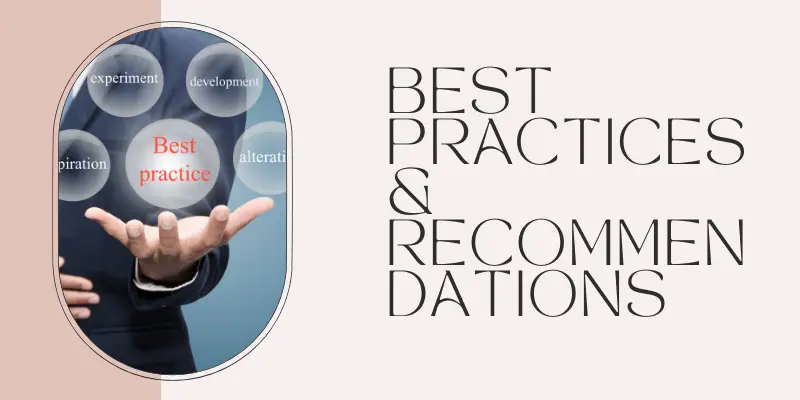Data Clean Rooms-The Secret to Privacy-Safe Data Power
Published: 18 Aug 2025
Data Clean Rooms are transforming the way companies share and analyze data. They allow businesses to work together without exposing sensitive customer information. In a world where privacy rules are getting stricter and third-party cookies are fading away, clean rooms offer a safe solution. They promise accurate insights while keeping personal data hidden. If you want to understand how they work, why they matter, and how to use them for your business, keep reading, the answers are here.
Why Data Clean Rooms Are Gaining Momentum?
The rise of Data Clean Rooms is no accident. Several significant changes in the digital world are driving companies toward this privacy-safe approach to working with data. On more important thing about online privacy is using vpn, Usind VPN for online privacy is also great.

1. Stronger privacy laws
Rules like the GDPR in Europe and CCPA in California have changed how businesses handle personal data. These laws demand that companies protect user information and give people more control over their data. Clean rooms help meet these rules by keeping raw customer data hidden while still allowing useful analysis.
2. Changes in the ad ecosystem
The advertising world is more fragmented than ever. People use different devices, platforms, and apps, which makes it harder for marketers to connect the dots. Data Clean Rooms offer a neutral space where brands and partners can compare data without sharing private details directly.
3. End of third-party cookies
Major browsers are removing third-party cookies, which used to be the main way advertisers tracked user behavior across the web. Without cookies, marketers need new tools to measure ad performance and understand their audiences. Clean rooms provide a privacy-friendly replacement by using secure matching methods.
4. Demand for privacy-by-design data sharing
Businesses now want solutions that put privacy first, right from the start. This is called a privacy-by-design approach. Clean rooms fit this model perfectly, they allow collaboration, insights, and audience measurement without revealing individual identities.
In short, tighter privacy rules, a shifting ad landscape, and new expectations from consumers are making Data Clean Rooms more important than ever.
How Data Clean Rooms Work
At first, the idea of a Data Clean Room might sound technical, but the process is actually simple once you break it down. Here’s how it works step by step:
1. Uploading secure data
Each company that wants to collaborate uploads its first-party data, this could be customer lists, sales records, or campaign results. Before uploading, the data is hashed. Hashing turns personal details like names and emails into unreadable codes. This means no one can see the original information.
2. Secure matching and analysis
Inside the clean room, advanced tools match data from different companies to find overlaps, patterns, and insights. This all happens in a controlled environment where no raw data leaves the system. Privacy-preserving techniques, such as encryption and strict access rules, make sure sensitive details stay hidden.
3. Only aggregated results are shared
When the analysis is complete, the clean room only provides summary results like totals, percentages, or trends. No individual-level data is ever shown. This ensures that Personally Identifiable Information (PII) remains fully protected.
A simple way to picture it
Imagine two companies each put their customer list in a sealed envelope. They place these envelopes into a locked vault. A trusted machine inside the vault compares the lists and tells you, “You have 10,000 customers in common.” You never see the other company’s list, and they never see yours, only the total number is revealed.
By working this way, Data Clean Rooms let businesses combine their knowledge and get valuable insights without breaking privacy laws or risking customer trust.
Real-World Use Cases
Data Clean Rooms are not just a theory, they are already being used in many industries to solve real problems. Here are some common examples:
1. Advertising
Marketers often want to know if people who saw an ad later bought the product. With a clean room, an advertiser can match its ad viewers with a store’s purchase data, all without sharing personal customer details. For example, a brand could learn that 20% of people who saw their ad also made a purchase without ever seeing the actual names of those buyers.
2. Retail & Consumer Packaged Goods (CPG)
Retailers and CPG brands can share point-of-sale (POS) data in a clean room to see how promotions are working. For instance, a supermarket chain and a soda company can compare sales data during a marketing campaign. They can spot trends, like which store locations saw the biggest boost, without revealing individual shopper information.
3. Financial Services
Banks and credit card companies can use clean rooms to detect fraud patterns or improve credit scoring. For example, two banks might compare customer behavior to spot unusual activity that could signal fraud. This can be done safely without either bank handing over sensitive customer records.
4. Healthcare
Hospitals, clinics, and research groups can work together in a clean room to study patient outcomes. They can combine results from different studies to see which treatments work best, while keeping patient identities private. This helps advance medical research while staying fully compliant with privacy laws.
These examples show that Data Clean Rooms are flexible. They work for marketing, finance, healthcare, and many other fields anywhere data needs to be shared securely for smarter decisions.
5. Types of Data Clean Rooms
Not all Data Clean Rooms are the same. They differ based on who controls them, how they are built, and how they are used. Here are the main types:
1. Platform-managed (Walled Gardens)
These clean rooms are owned by big tech platforms like Google, Meta, and Amazon. They let advertisers and partners use the platform’s audience data in a safe way. For example, a brand can check how many people saw their ad on Facebook and then bought the product without seeing personal profiles. The downside is that these clean rooms only work within that platform’s ecosystem.
2. Warehouse-built (Data Warehouse providers)
Some cloud data platforms, like Google BigQuery, Snowflake, and Databricks, offer clean room features built into their data warehouses. This allows companies to run secure, privacy-protected analysis directly in their own data storage systems. The benefit is flexibility and the ability to integrate with other analytics tools.
3. Neutral / Orchestrator clean rooms
These are run by independent third parties. They are designed to work across different platforms and data sources. This makes them a good choice for companies that want to collaborate with many partners, not just within one “walled garden.”
4. Data Onboarding Vendors & Customer Data Platforms (CDPs)
Companies like LiveRamp provide clean room services along with identity resolution (matching the same customer across different datasets) and data marketplaces for secure partner sharing. This is useful for marketing teams that want both audience matching and easy access to external data.
5. Custom / In-house builds
Some large enterprises create their own clean rooms, fully tailored to their needs. These in-house systems offer maximum control over security, governance, and features but, they require more time, expertise, and cost to build and maintain.
By understanding these types, businesses can choose the clean room model that best fits their data strategy, budget, and partnership goals.
Key Benefits
Data Clean Rooms offer several strong advantages that make them valuable for many businesses and industries.
1. Privacy-compliant collaboration
With a clean room, companies can work together without ever exposing raw customer data. The system uses privacy-safe methods like encryption and hashing, so sensitive details stay hidden. This helps businesses follow strict rules like GDPR and CCPA while still gaining useful insights.
2. Better measurement and analysis
Clean rooms allow advanced marketing measurements such as:
- Attribution – finding out which ad or campaign led to a sale.
- Audience overlap – seeing how much two customer lists have in common.
- ROAS (Return on Ad Spend) – understanding how much revenue a campaign brings compared to its cost.
All of this can be done without violating privacy laws.
3. Control over data ownership
In a clean room, each contributor keeps full ownership of their data. The raw files never leave their secure environment. Partners only see aggregated results, which means no one loses control over their information.
4. Works for many industries
The benefits of clean rooms are not limited to marketing. They can be applied in:
- Retail – tracking promotion success without exposing shopper data.
- Healthcare – studying treatment results while protecting patient identities.
- Finance – detecting fraud or improving credit scoring without sharing sensitive records.
- Entertainment – measuring streaming performance or audience engagement without revealing user details.
In short, Data Clean Rooms let companies get powerful, actionable insights while keeping trust, privacy, and control intact.
Challenges & Limitations
While Data Clean Rooms have many benefits, they are not perfect. There are some challenges and limits that businesses should understand before using them.
1. Complex setup and high cost
Setting up a clean room is not always easy. It requires technical knowledge, secure infrastructure, and sometimes expensive software. For smaller businesses, the cost can be a big barrier.
2. Lack of interoperability
Not all clean rooms work well together. If two partners use different clean room providers, it can be difficult or even impossible to connect their systems. This limits collaboration and makes it harder to scale.
3. Data mismatches and governance needs
Clean rooms rely on matching data from different sources. If the identifiers (like email hashes or customer IDs) or file formats don’t align, results may be incomplete. Also, clear governance rules are needed to decide who can access the data, how it can be used, and for what purposes.
4. Not a complete privacy fix
Even though clean rooms are designed for privacy, they are not a magic solution. Some critics warn about the risk of “privacy-washing” where companies claim to protect data but still use it in ways that raise concerns.
5. Accuracy trade-offs
Because clean rooms only share aggregated results, some details can be lost. This means the insights might be less precise than if companies could see the raw data. It’s a necessary trade-off to keep privacy safe.
Understanding these challenges helps companies make better decisions and plan ahead before investing in a Data Clean Room.
Ecosystem Players & Comparisons
Several companies offer Data Clean Room solutions. Each has its own strengths, so the right choice depends on your needs, budget, and existing tools.
1. Google BigQuery Clean Rooms
Google’s solution is built directly into BigQuery, its cloud data warehouse. It allows fast deployment because there’s no need to set up a separate system. Data can be shared in place, meaning it stays where it is instead of being copied. For existing BigQuery customers, there is no extra cost, making it an affordable option for many businesses.
2. Snowflake Clean Rooms
Snowflake’s clean room features were strengthened through its Samooha acquisition. This platform supports cross-cloud collaboration, meaning partners can work together even if they use different cloud providers. Snowflake also offers ready-made templates and analytics tools that make it easier to run privacy-safe campaigns without building everything from scratch.
3. Other notable vendors
- AWS Clean Rooms – Amazon Web Services provides a cloud-based clean room that integrates with its data and analytics tools, suitable for businesses already using AWS.
- Optable – A third-party clean room provider that focuses on easy integration between advertisers, publishers, and partners.
- AppsFlyer – Offers clean room solutions mainly for mobile app marketers, helping measure campaign performance without sharing personal data.
These providers all work toward the same goal: enabling safe, privacy-first data collaboration. The main differences are in ease of setup, cost, integration options, and who they work best for. From small marketing teams to large enterprises with complex data needs.
Best Practices & Recommendations
Using a Data Clean Room is not just about choosing the right technology – it’s also about how you set it up and manage it.

Here are some best practices to follow:
1. Start with clear governance
Before you begin, set clear rules about how the clean room will be used. Define the scope (what data will be shared and for what purpose), permissions (who can access it), and agreements (how the results can be used). Good governance prevents misunderstandings and keeps the project compliant with privacy laws.
2. Work with trustworthy partners
Clean rooms rely on collaboration. Only share data with partners who have a strong track record for data security and ethical use. Trust is key, once data is shared, even in a safe environment, you want to be sure your partner follows the rules.
3. Combine with other privacy tools
A clean room should be part of a bigger privacy strategy. Use it alongside other tools like encryption, consent management platforms, and anonymization methods. This creates multiple layers of protection for your data.
4. Choose neutral clean rooms for flexibility
If you work with multiple platforms or want to connect with many partners, consider using a neutral clean room instead of a platform-owned one. Neutral providers can improve interoperability, meaning your system can work smoothly with different partners and tools.
Following these steps helps you get the most value from a Data Clean Room while keeping privacy, trust, and compliance front and center.
Future Outlook
The future of data clean rooms looks promising. The industry is moving toward more unified rules and tools. One important step is the OPJA specification by the IAB Tech Lab in 2023. This standard aims to make different clean room solutions work together smoothly. It will help companies share and use data more easily, even if they use different platforms.
We can also expect adoption to grow across many industries, not just advertising and marketing. Sectors like healthcare, retail, and finance may start using clean rooms to handle sensitive data safely.
Another driver of change will be new privacy regulations. As governments introduce stricter laws, companies will look for compliant ways to collaborate on data. Clean rooms are well-placed to meet these needs, and they might even become a standard requirement in some sectors.
In short, the future will bring more compatibility, wider usage, and regulation-driven innovation making data clean rooms a central tool in privacy-first data strategies.
Conclusion
In conclusion, data clean rooms are quickly becoming a vital solution for businesses that need to work with data while protecting privacy. With clear industry standards like the OPJA specification and growing use across multiple sectors, their role will only expand. As regulations continue to tighten, clean rooms will not just be an option but a necessity for safe and effective data collaboration. Companies that adopt and adapt to this technology early will be better prepared for a future where privacy and innovation go hand in hand.
FAQs
A data clean room is a secure place where companies can combine and analyze data without exposing personal information. It helps protect user privacy while allowing insights.
They allow businesses to collaborate on data safely. This is crucial in a world where privacy rules like GDPR and CCPA are getting stricter.
They hide or encrypt personal details. Instead of showing raw data, they provide aggregated insights that keep individuals anonymous.
Advertisers, retailers, healthcare providers, and financial companies all use them. Any industry that deals with sensitive data can benefit.
They include platform-managed (Google, Meta), warehouse-built (Snowflake, BigQuery), neutral third-party, onboarding vendors, and custom in-house solutions.
They help with privacy-safe collaboration, accurate measurement, audience insights, and maintaining ownership of data.
Setup can be costly and complex. Also, data formats may not match, and aggregated outputs sometimes reduce accuracy.
Not entirely. While they protect data, experts warn against “privacy-washing.” They should be combined with other privacy strategies.
Big providers include Google, Snowflake, AWS, and Meta. Smaller vendors like Optable and AppsFlyer also offer solutions.
They will keep growing as industries adopt them and governments push for stronger privacy rules. Standards like OPJA will improve interoperability.

- Be Respectful
- Stay Relevant
- Stay Positive
- True Feedback
- Encourage Discussion
- Avoid Spamming
- No Fake News
- Don't Copy-Paste
- No Personal Attacks

- Be Respectful
- Stay Relevant
- Stay Positive
- True Feedback
- Encourage Discussion
- Avoid Spamming
- No Fake News
- Don't Copy-Paste
- No Personal Attacks





